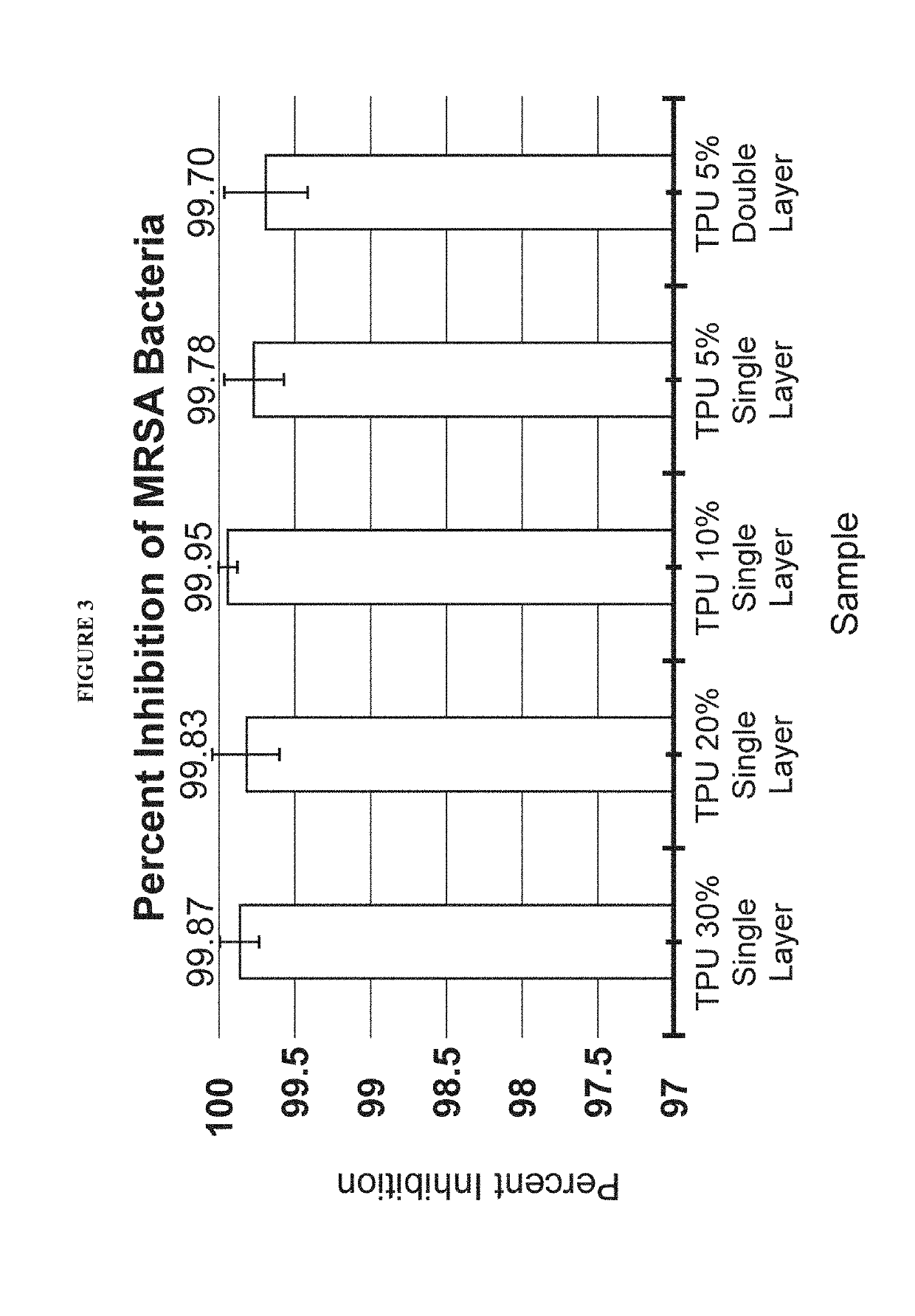Nanospun hemp-based materials
a hemp-based, hemp-based technology, applied in the field of nano-spinned materials, can solve the problems of limited hemp cultivation, high restriction of hemp cultivation, and relatively difficult use, and achieve the effect of reducing the population of gram-negative bacteria
- Summary
- Abstract
- Description
- Claims
- Application Information
AI Technical Summary
Benefits of technology
Problems solved by technology
Method used
Image
Examples
Embodiment Construction
[0061]As an alternative to wood pulp, hemp grows faster and is grown in areas that are not hospitable to trees. Indeed, a primary benefit of hemp plants is their ability to grow rapidly in a wide variety of soils and temperatures. For example, hemp grows in inhospitable areas, is resilient to weed ingrowth, does not require the use of pesticides or herbicides and requires little fertilizer or water to thrive. Hemp can also be utilized to assist in clearing or resting a field, between higher energy / nutrient uptake crops, such as soy and corn. Ultimately, hemp functions as a carbon negative plant, making it highly attractive for use. Of course, a primary value of the hemp plant is the production of seeds and oil containing green material, and the ability to process those seeds for hemp oil and then extractions of green material, including flowers, stems, leaves, and stalks, for oils high in CBD. The term “hemp oil” means any one of oils produced from the cannabis plant, include those ...
PUM
| Property | Measurement | Unit |
|---|---|---|
| concentration | aaaaa | aaaaa |
| height | aaaaa | aaaaa |
| height | aaaaa | aaaaa |
Abstract
Description
Claims
Application Information
 Login to View More
Login to View More - R&D
- Intellectual Property
- Life Sciences
- Materials
- Tech Scout
- Unparalleled Data Quality
- Higher Quality Content
- 60% Fewer Hallucinations
Browse by: Latest US Patents, China's latest patents, Technical Efficacy Thesaurus, Application Domain, Technology Topic, Popular Technical Reports.
© 2025 PatSnap. All rights reserved.Legal|Privacy policy|Modern Slavery Act Transparency Statement|Sitemap|About US| Contact US: help@patsnap.com



